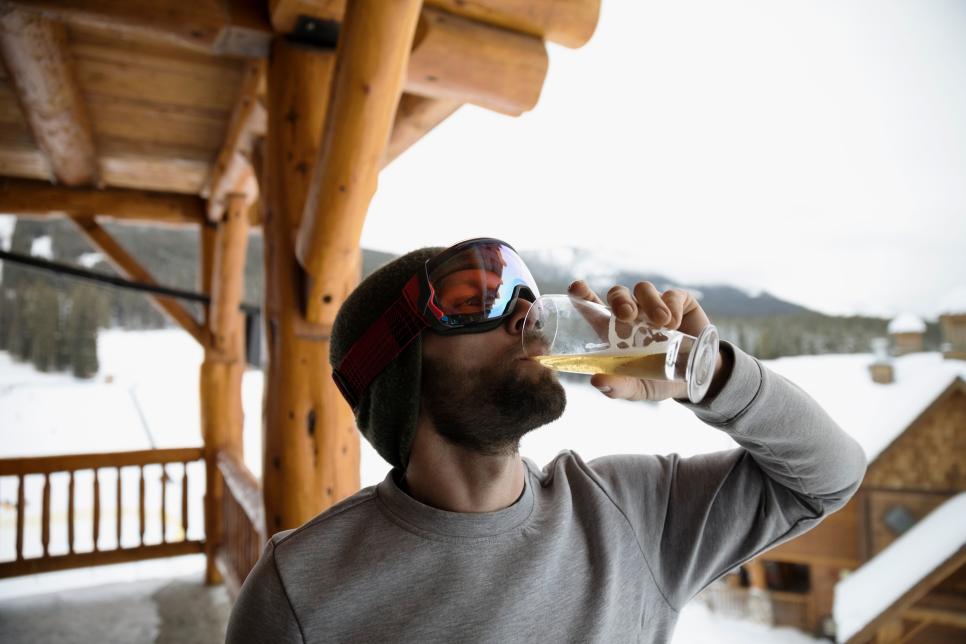The Loop
Germany's Olympic athletes are powered by beer

Hero Images
For representatives of the apex of human athletic performance, many Olympians are on record as eating a bunch of hot garbage. Absurdly youthful gold-medal snowboarder Chloe Kim is on record as supporting both the nutritional and medicinal power of churros. In the 2016 Rio Olympics, Lilly King, one of the top .00000000004% of swimmers in the Earth and probably space, prepped for her final by Joey Chestnutting a Big Mac. And just look at their role models: Usain Bolt reported snarfing down McNuggets before murdering the 100 meter world record at the Beijing Olympics in 2008. If eating six gluey-tasting chicken chunks makes you good at running, my son is on track to become a god.
Yet as they previously did with sausage, nuclear fission, accordions and hole punchers, apparently, Germany has claimed the title for Inventors of the Best Unusual Olympic Diet Staple: the vitamin-packed, carb-heavy, fluid-replenishing energy potion known as … non-alcoholic beer.
“It’s a really good drink directly after training or after competition,” said Simon Schempp, a German biathlete, to the New York Times. Schempp lost out on gold by like 23/24th of a second in the the 15-kilometer mass start event earlier this week; he came away with silver. (The biathlon, if you remember, is the sport in which you ski uphill for three hours at a time, pausing only to fire some guns. Golf is fun, but the biathlon is not golf, is what we’re saying.)
We probably do not need to tell you that in Germany beer is much more prevalent and enjoyable post-workout drink than sugary Gatorade or Powerade or water with fizzy tablets in it or whatever chemical we in America we’ve told ourselves is required to properly recover from a two-mile jog.
But on the 156-member German Olympic team, it’s less marketing and more science. Between 2011 and 2016, Germans upped their consumption of nonalcoholic beer by 43 percent; they drink the second-most in the world, behind Iran, whose citizens are frankly not very good at luge. In 2016, Germans drank three times as much alcoholic beer than they did sports drinks, and thus cut way down on the amount of time they had to decide between Glacier Freeze and Citrus Cooler. The German brewery Krombacher has even provided 3,500 liters of non-alcoholic beer to the athletes’ village. We can barely get that much water to Puerto Rico.
And the Times goes on to quote Johannes Scheer, the doctor for the country’s Olympic ski team, as saying nearly his entire squad tips one back during practices. In 2009, he conducted a study that found marathon runners who drink a nonalcoholic beer for three weeks before and two weeks after a race had “significantly less inflammation and fewer upper respiratory infections” than those who had taken a placebo. He attributed all this good news to polyphenols, immunity-improving chemicals found in plants used to brew the beer.
Whatever it is, it’s working: Germany holds second in the Olympic medal count behind Norway, which isn’t really fair because those guys start teaching luge and skeleton and ice dancing in like the second grade. (It’s like being second to Jimmy Buffett in songs about Frozen Summery Drinks That Arrive in Weird Glasses.) And Krombacher, it should be noted, also sent over 11,000 liters of real beer, because they’re cool people. So the American strategy should be clear: Fewer nutritionists and energy drinks and protein bars that taste like mulch glommed together with rubber cement. And more beer. Beer beer beer. Except for Chloe Kim, who isn’t remotely old enough to drink.

.jpg)